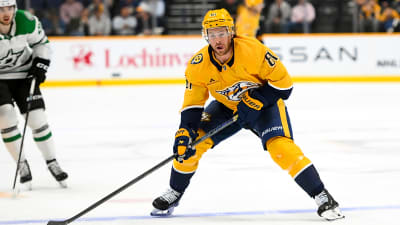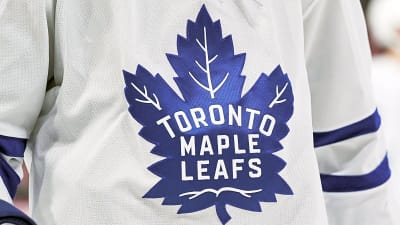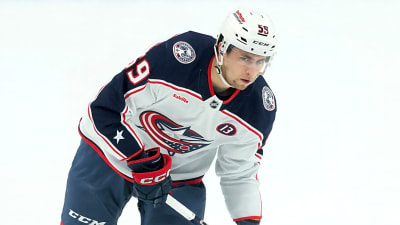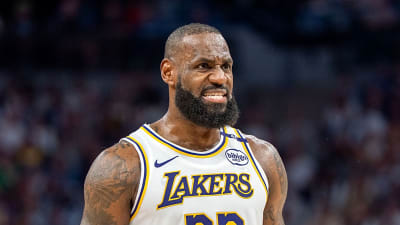
Recently, we went through the Vancouver Canucks’ three best contracts heading into the 2025-26 season. Now, we will take a look at the other side, the worst. While these deals appeared to match the player’s performance at the time, they have already aged badly going into this season. If the Canucks have any hope of making it back to the playoffs, these three players will need to start performing to the level of their salary. Or we might be sitting here next year, lamenting yet another disappointing season.
3. Dakota Joshua – $3.25 Million AAV
Looking strictly at the numbers Dakota Joshua put up last season, this contract has already become a bad one for the Canucks. He only scored seven goals and 14 points in 57 games, a huge dropoff from the career-high 18 goals and 32 points that he put up in 2023-24. The good thing for the Canucks is, he can easily turn that around this season since he will be healthy and coming off an offseason where he can train properly. He won’t be rehabbing a surgery and health scare after being diagnosed with testicular cancer, and will be able to start the season on time, unlike last season when he missed the first 14 games. It took him a while to get up to speed, and he only really got going in the final two months, when he put up three goals and six points in 13 games.
We know what Joshua can bring to the team when he is 100 percent healthy. During that career season in 2023-24, he not only provided a surprising amount of offence, but he also was a physical force – a lot like his teammate Kiefer Sherwood last season – leading the team with 245 hits. He was also part of one of the best third lines in hockey alongside Conor Garland and Teddy Blueger, a trio that could be reunited this season. If that happens, we might see his contract on the best list instead of the worst at this time next year.
2. Nils Hoglander – $3 Million AAV
Like Joshua, Nils Hoglander had a career season in 2023-24, scoring 24 goals and 36 points in 80 games. Last season, he dropped off a cliff offensively and scored only eight goals while being a healthy scratch at times. He fell into head coach Rick Tocchet’s doghouse and seemingly never got out of it, similar to the Bruce Boudreau era when he had his last bad campaign. But back then, he wasn’t costing the Canucks $3 million AAV. Now, he’s getting paid like a 20-goal scorer, and they need him to get back to that level if they hope to bounce back from their mediocre showing last season.
At his best, Hoglander is a versatile, forechecking machine that gets under the skin of his opponents and can bust out a highlight-reel play every now and then. He reminds me a lot of Jannik Hansen and Alex Burrows in their prime, two players that became fan favourites because of their work ethic and tenacity. Having said that, he does need to become more reliable defensively, something that has gotten him into hot water with two coaches already. That’s one thing that never was an issue with Hansen and Burrows, who were two of the best two-way players of their time. The thing is, that wasn’t a problem back in 2023-24, so if he can return to that level this season, he could land on the best list next year alongside Joshua, too.
1. Elias Pettersson – $11.6 Million AAV
Before opening this article, you probably knew what number one was going to be. It’s, of course, Elias Pettersson’s $11.6 million AAV deal that still has six years left on it and now has a full no-movement clause that is in effect for the remainder of the contract. In other words, if he doesn’t want to leave the Canucks, he won’t – barring a very expensive buyout. While the increasing salary cap ceiling will make it look better on paper as time goes on, he will still face scrutiny day in and day out if he can’t return to the 102-point player he was before he signed on the dotted line.

In the first season of the monster extension, Pettersson had a career-low 15 goals and 45 points in 64 games. Six players finished with more goals than him, including Pius Suter (25) and Kiefer Sherwood (19), who made a combined $3.1 million. That’s just not good enough for someone that is earning $3.75 million more than the next highest-paid player (Quinn Hughes at $7.85 million). Considering he is still the top-line center on the depth chart – and getting paid dearly to be in that position – he has to start looking like the Pettersson that wowed everyone in 2022-23 and made management believe he was worth $11.6 million. If he doesn’t and continues to resemble Loui Eriksson from his tumultuous time in Vancouver, this contract may turn out to be not only the worst in 2025-26, but Canucks history as well.
In a recent interview with NHL.com, Pettersson admitted that the new deal made him overthink things a bit, trying to become a player he wasn’t.
“Maybe it was that early in the season I had the wrong attitude… that yes, ‘now I’ve signed a big contract and now I have to do more, instead of just being myself’. And when the points didn’t come, I tended to start thinking and overthinking everything instead of just doing what I usually do,” Pettersson said. “My game (last season) was obviously not at the level it was in the two seasons before that… I had a knee injury last summer and that hindered a lot of my training then; it was hard to really train 100 percent… Now I’m just trying to look forward.”
The best-case scenario for the Canucks is that this list has three new players on it next year. At the very least, Pettersson’s contract can’t be the first one people think about when ranking the worst on the team. But time will tell on that.
More must-reads:
- Numerous games stand out among NHL's newly released 2025-26 schedule
- A Buddhist monk is surprisingly in contention at the Open Championship
- The 'MLB Home Run Derby champions' quiz
Breaking News
Trending News
Customize Your Newsletter
 +
+
Get the latest news and rumors, customized to your favorite sports and teams. Emailed daily. Always free!








